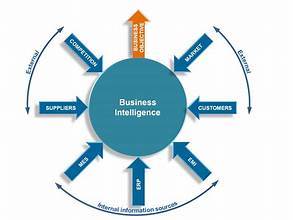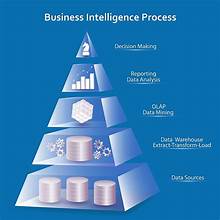
Introduction
In today’s rapidly evolving business environment, the effective use of data is more crucial than ever. Descriptive data analysis, which involves summarizing past data to identify patterns and trends, plays a pivotal role in shaping business intelligence (BI). As we approach 2024, understanding the impact of descriptive data analysis on BI is essential for businesses aiming to leverage data for strategic advantage. This article explores the current trends and insights related to descriptive data analysis and its influence on BI.
What is Descriptive Data Analysis?
Descriptive data analysis involves summarizing historical data to understand what has happened in the past. It provides a comprehensive overview through statistical measures, such as averages, percentages, and frequency distributions. The primary goal is to deliver insights into past performance, enabling businesses to make informed decisions based on historical data.
The Role of Descriptive Data Analysis in Business Intelligence
- Enhanced Decision-Making
Descriptive data analysis allows businesses to make data-driven decisions by providing a clear picture of past performance. This clarity helps in identifying successful strategies and areas needing improvement. By analyzing past trends, businesses can forecast future outcomes with greater accuracy.
- Improved Reporting and Visualization
BI tools heavily rely on descriptive data analysis to generate reports and visualizations. These tools transform complex data into easily understandable formats, such as charts and graphs. Effective visualization helps stakeholders quickly grasp key insights and make informed decisions.
- Benchmarking and Performance Tracking
Benchmarking involves comparing current performance against historical data or industry standards. Descriptive data analysis provides the historical context needed for benchmarking, enabling businesses to track their performance over time and measure progress against set goals.
- Customer Insights and Personalization
Understanding customer behavior through descriptive analysis allows businesses to tailor their marketing efforts. By examining past customer interactions, businesses can segment their audience, personalize offers, and enhance customer satisfaction.
Trends in Descriptive Data Analysis for 2024
- Integration with Advanced Analytics
In 2024, there is a growing trend towards integrating descriptive data analysis with advanced analytics, such as predictive and prescriptive analytics. This integration enhances the depth of insights, allowing businesses to not only understand past performance but also predict future trends and recommend actions.
- Increased Use of AI and Machine Learning
Artificial Intelligence (AI) and Machine Learning (ML) are increasingly being used to automate descriptive data analysis. AI-powered tools can analyze vast amounts of data quickly and accurately, uncovering patterns that might be missed through manual analysis. This trend is expected to continue, making descriptive analysis more efficient and insightful.
- Real-Time Data Analysis
The demand for real-time data analysis is rising. Businesses are seeking tools that can provide up-to-date insights, enabling them to respond promptly to emerging trends. Real-time descriptive analysis helps in monitoring performance and making immediate adjustments to strategies.
- Enhanced Data Visualization Techniques
Advanced data visualization techniques are gaining traction. Interactive dashboards and dynamic visualizations allow users to explore data more deeply and understand complex relationships between variables. This trend is expected to enhance the effectiveness of descriptive data analysis in BI.
- Focus on Data Quality and Governance
With the increasing reliance on data, there is a stronger emphasis on data quality and governance. Ensuring that data is accurate, consistent, and reliable is crucial for effective descriptive analysis. Businesses are investing in data governance frameworks to maintain high standards of data quality.
Insights for Businesses
- Invest in Modern BI Tools
To leverage descriptive data analysis effectively, businesses should invest in modern BI tools that offer advanced analytical capabilities, real-time data processing, and intuitive visualization options. These tools will help in gaining deeper insights and making informed decisions.
- Combine Descriptive and Advanced Analytics
Integrating descriptive analysis with predictive and prescriptive analytics can provide a comprehensive view of past performance and future possibilities. This approach enables businesses to make proactive decisions and strategize effectively.
- Focus on Data Quality
Ensuring high data quality is essential for accurate descriptive analysis. Businesses should implement robust data governance practices to maintain data integrity and reliability.
- Embrace AI and Automation
Leveraging AI and automation can enhance the efficiency and accuracy of descriptive data analysis. Businesses should explore AI-powered BI tools that offer automated insights and predictive capabilities.
- Adopt Real-Time Analysis
Real-time descriptive analysis allows businesses to stay agile and responsive. Investing in tools that provide real-time insights can help in adapting strategies quickly and seizing opportunities.
Conclusion
Descriptive data analysis continues to be a cornerstone of business intelligence, providing valuable insights into past performance and guiding strategic decisions. As we move into 2024, the integration of descriptive analysis with advanced analytics, AI, and real-time processing will further enhance its impact on BI. By embracing these trends and focusing on data quality, businesses can harness the full potential of descriptive data analysis to drive growth and success.


